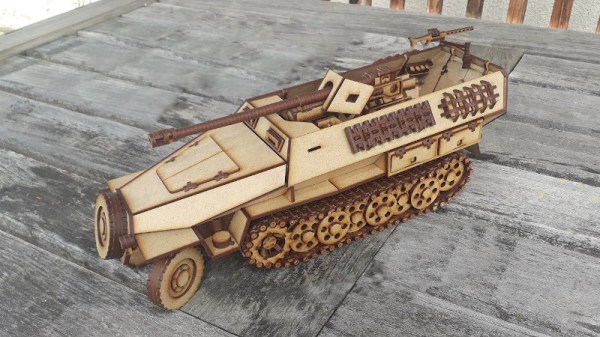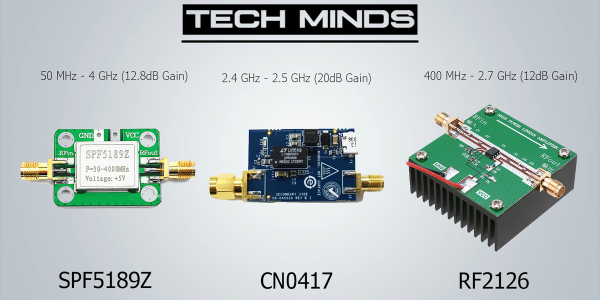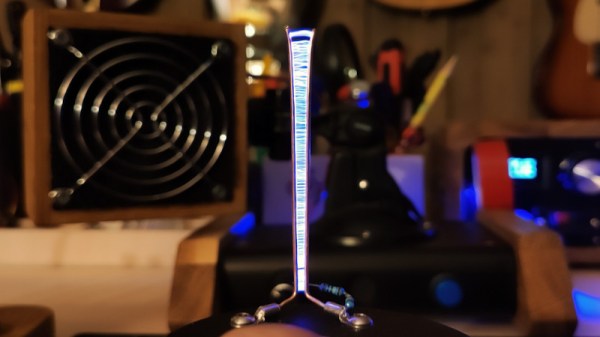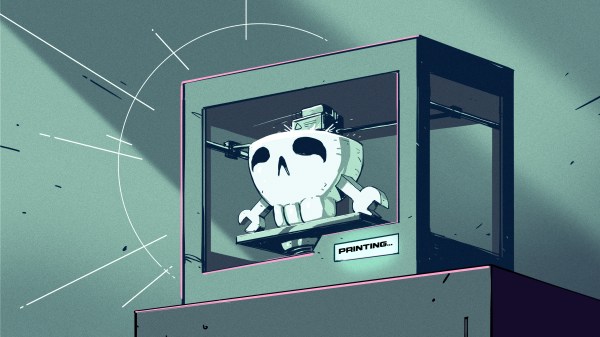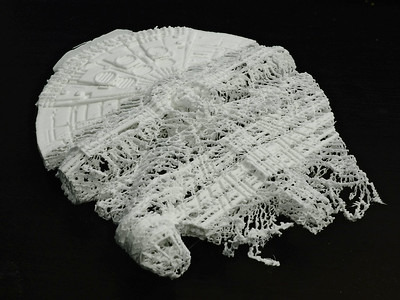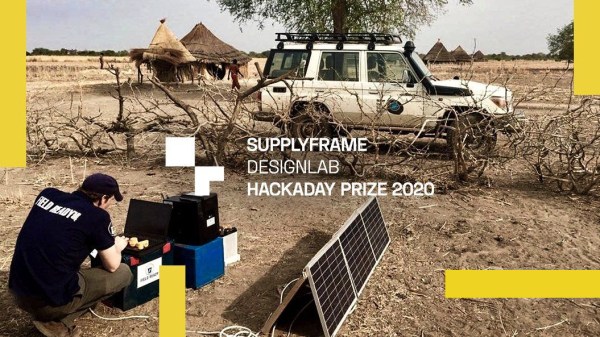The half-track is a vehicle design that has gradually fallen out of favour in the decades since World War II. Combining the benefits of easy driving and handling of wheeled vehicles with the strong mud and snow performance of a tracked vehicle, they served a niche before largely being phased out with the rise of the armoured personnel carrier. [JackCarter] wished to build his own, so whipped up a lasercut RC version of the SdKfz 251 22.
The work is impressive, with [JackCarter] creating the design in Solidworks from photos and illustrations of the vehicle. The moving parts are lasercut, including the tracks themselves, assembled from many tiny lasercut MDF parts. The benefit of using lasercutting to make the model is that it was easy for [Jack Carter] to create simple jigs to ease the process of putting the tracks together. A NodeMCU with a motor shield controls the gear motors used to drive the tracks, and drives a servo for steering. Control is via a smartphone, thanks to the Blynk framework which makes building apps for custom projects easy.
The finished product really shows off [JackCarter]’s 3D design skills, and looks like great fun to build and drive. We’d love to see it with a lick of paint and some period decals to really complete the look. Hackers love a good tracked vehicle, and we’ve seen some impressive builds before. Video after the break.

